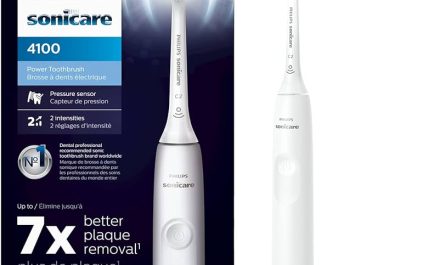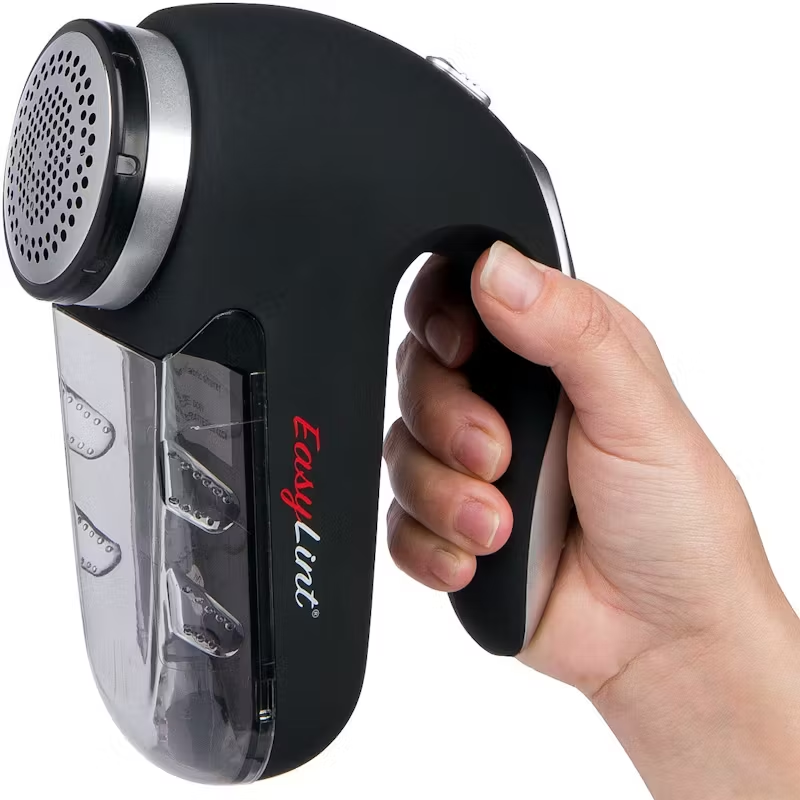The Debate: Pros and Cons of Cutting Wet Hair with Clippers
When it comes to the question, ‘can you use clippers on wet hair?’, there are differing opinions. Below, we list the advantages and drawbacks of using clippers on damp locks.
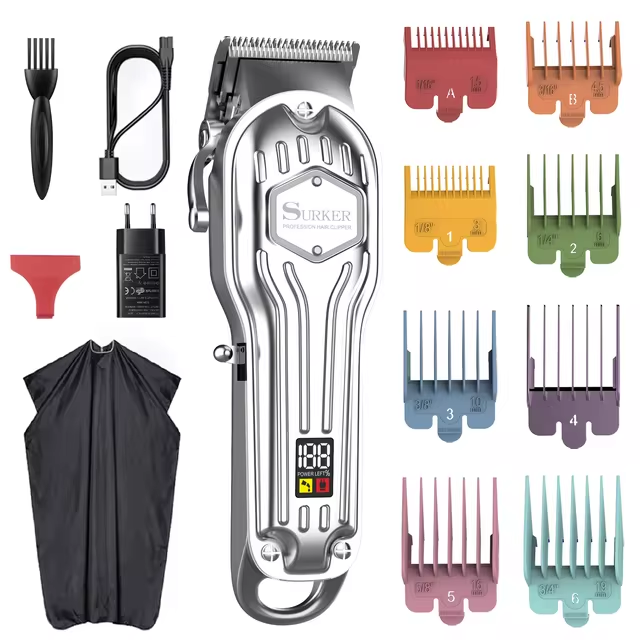
Evaluating Precision, Manageability, and Risks
The Pros:
- More Control: Wet hair sticks together. This makes it simpler to see cut lines and lengths.
- Ease of Handling: With thick or curly hair, wetting it lowers volume. It helps clippers glide smoothly.
- Clean Process: Wet hair means less mess. It stays together and is easy to dispose of.
The Cons:
- Hair Damage: Wet hair breaks easily. Clippers might pull and cause more damage than when hair is dry.
- Clippers Wear: Moisture might rust blades or reduce their sharpness. Some clippers may not cope well with wet hair.
- Professional Warning: Many barbers prefer dry cuts. They believe the risks of cutting wet hair with clippers are higher.
In summary, while cutting wet hair with clippers can be done, it’s vital to weigh the pros against the cons. Use correct tools and take extra care if you choose to cut wet hair with clippers. This approach might lead to neater cuts but also might risk hair damage and tool wear.
Essential Equipment: Choosing the Right Clippers
When attempting to cut wet hair, selecting the right clippers is vital. Your goal? Find ones designed for wet conditions. Water-resistance and durability are key aspects to look for.
Features of Water-Resistant Clippers for Wet Hair Cutting
Clipper features that make wet hair cutting a breeze include:
- Stainless Steel Blades: Resist rust and last longer with moisture contact.
- Waterproofing: Opt for clippers that boast waterproof or water-resistant capabilities.
- Adjustable Speeds: Gives you more control when handling the challenges of wet hair.
- Detachable Blades: These offer simple cleaning and ensure long-term sharpness.
- Rubber Grips: Reduce the chance of slipping when your hands are wet.
These features help maintain a smooth, safe cutting experience and protect your clippers from moisture-related damage. Choose wisely to ensure a precise, neat trim without the hassle.
Prepping Your Hair for a Wet Clipper Cut
Before using clippers on wet hair, proper preparation ensures a smoother cut. Here are straightforward steps to prepare your hair for cutting with clippers.
Steps to Wash, Condition, and Section Hair Before Cutting
- Cleanse Your Hair: Use a men’s shampoo tailored to your hair type. This removes buildup and provides a fresh start.
- Apply Conditioner: A light conditioner detangles and softens your hair strands. It helps clippers pass through easily.
- Gentle Hair Drying: Gently pat your wet hair with a towel. Do not rub, as this could cause frizz or damage.
- Detangling: Comb through with a stainless steel hair comb. This smooths your hair and readies it for clipping.
- Sectioning for Control: Use sectioning clips to divide your hair into manageable parts, if needed. This helps you focus on one area at a time.
Prepare carefully with these steps to ensure a safer, more accurate wet haircut with clippers.
Cutting Techniques for Wet Hair with Clippers
Cutting wet hair with clippers is a delicate process. Here is a guide to ensure you do it right.
Guidelines for Sectioning, Blending, and Avoiding Damage
To start, section the hair. This helps in managing the cut. Use clips to divide hair for styles like undercuts or when keeping the top long. This makes it easier to cut in parts.
Work on one section at a time. This ensures an even cut. Move clippers against hair growth for closeness. Start with a larger guard and reduce size for blending or fading. Be gentle. Wet hair is fragile.
Keep the skin tight around ears and neck. This helps get a neat edge. Use the right guard for the look you want. Change them as needed.
To protect hair, use sharp, clean clippers. They should glide smoothly and not pull. After cutting, check for evenness. Make a second pass if needed, but don’t overdo it.
Remember, avoid pressing too hard. Soft, steady movements work best. This reduces the chance of damage to both hair and clippers. Practice will make perfect.
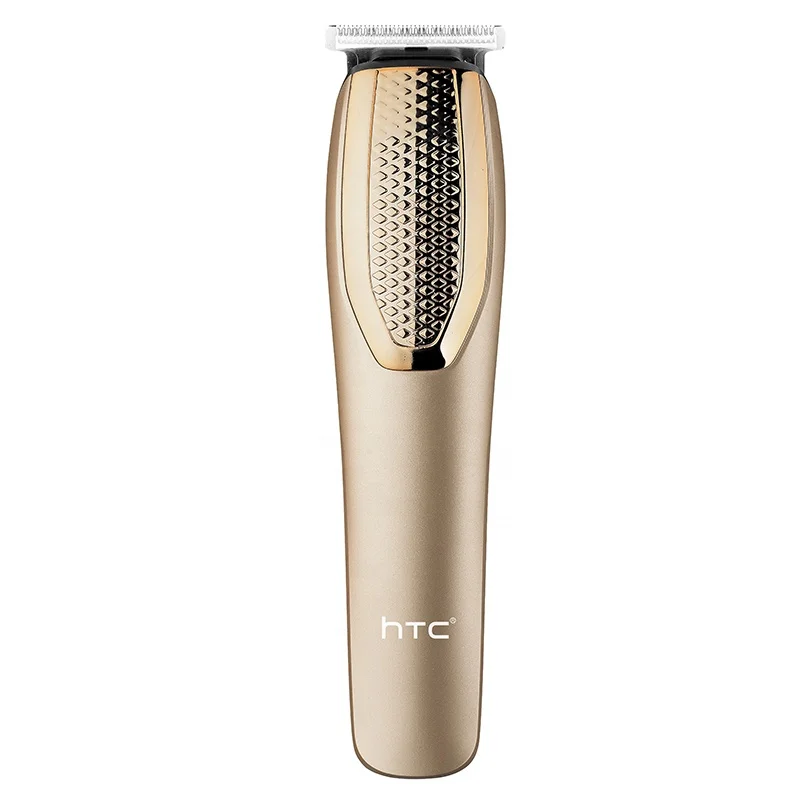 Clippers Maintenance: Ensuring Longevity and Performance
Clippers Maintenance: Ensuring Longevity and Performance
Proper maintenance of clippers is crucial, especially when cutting wet hair. Here’s how to keep your clippers in top condition.
Best Practices for Cleaning and Oiling Your Clippers
Cleaning Your Clippers: After each use, remove hair from the blades. You can use a special brush. If your clippers are water-resistant, rinse them under running water. Make sure to dry them well after.
Oiling Your Clippers: Before and after each use, apply a few drops of clipper oil to the blades. This keeps them moving smoothly and prevents undue wear from friction.
Regular maintenance ensures your clippers perform well and last longer. It helps avoid pulling hair and ensures a smooth cut.
Styling After a Wet Clipper Cut
Proper styling after cutting wet hair with clippers is crucial for achieving a polished look. Here are steps and product recommendations to help you style your hair post-cut.
Drying, Styling, and Product Recommendations for Post-Cut Care
Drying Your Hair: Pat hair gently with a towel to remove excess water. Avoid rubbing to prevent frizz and damage. If you use a blow dryer, choose a low heat setting. Use a brush to style it while drying, especially if you want more volume or a particular direction for your hair.
Styling Products: Choose a product that matches your hairstyle and hair type. For sleek, polished styles, consider using pomade or wax. If you prefer a natural, textured look, a lightweight styling cream or sea salt spray might be better.
Apply the product evenly through your hair. Start with a small amount; you can always add more if needed. Style as desired using your fingers or a comb for more precision.
Taking these steps will help you achieve a great finish after cutting your hair with wet clippers. With the right care and products, your style can look fresh and professional.
Safety Measures for Using Clippers Near Water
When cutting wet hair with clippers, safety is crucial. It’s essential because you’re mixing electricity and water. Here we’ll cover must-know safety tips and practices.
Electrical Safety Tips and Best Practices to Avoid Accidents
Use Water-Resistant Clippers: Choose clippers designed for wet conditions. They reduce electric shock risks.
Keep Cord Dry: If using corded clippers, ensure the cord stays dry and away from water. Arrange your space wisely.
Dry Hands Before Handling: Always dry your hands before touching the clippers or switches.
Clip Away from Water Sources: It’s best to cut away from sinks or bathtubs. This minimizes accident chances.
Inspect Clippers Before Use: Check your clippers for any damage like frayed cords or cracks. If damage exists, fix it before use.
Follow Manufacturer Guidelines: Use clippers as directed by the maker. This ensures safety and effectiveness.
By sticking to these tips, you can safely cut wet hair with clippers. Always remember, when it comes to electrical devices and water, caution is key.
Final Thoughts on Wet Hair Cutting with Clippers
After exploring the subject, it’s clear there’s much to consider when asking, ‘can you use clippers on wet hair?’. The discussion reveals both upsides and challenges. Let’s recap the key points to guide your approach to wet hair cutting with clippers effectively.
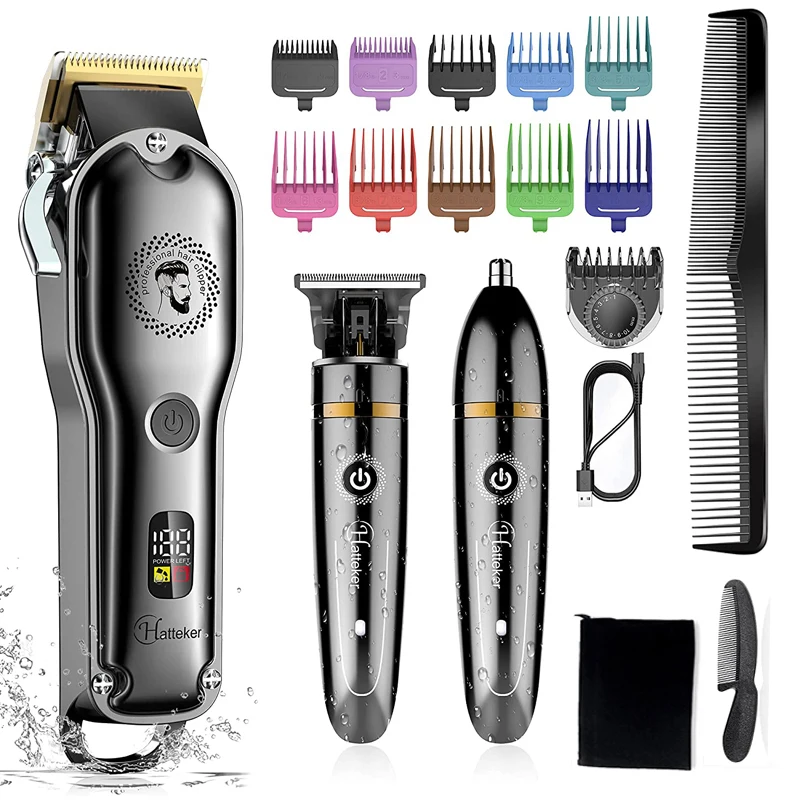 Summarizing the Considerations and Best Approaches for Success
Summarizing the Considerations and Best Approaches for Success
- Choose the Right Tools: Select water-resistant clippers with stainless steel blades for durability and performance.
- Prep Your Hair: Wash and condition your hair. Pat it dry, detangle, and section if needed, for easier cutting.
- Fine-tune Your Technique: Use the appropriate guards. Start with a bigger one, then switch to smaller ones for blending. Move against the grain for a close cut.
- Prioritize Clippers’ Maintenance: Clean your blades after each use. Dry them well and apply clipper oil regularly.
- Style With Care: Post-cut, style your hair with the right products. Use a low-heat setting if blow-drying. Apply a pomade or wax for a polished look, or a styling cream for a casual style.
- Stay Safe: Use clippers away from water sources. Keep your hands and equipment dry. Check your clippers for damage before each use.
- Know Your Hair: Remember, different hair types require different approaches. Adapt your technique accordingly.
By keeping these points in mind, you can safely and successfully cut wet hair with clippers. This skill is useful whether you’re a pro or just want to maintain your style at home. With the right equipment and approach, you can achieve clean, even cuts, while minimizing the risk of damage. Practice makes perfect, and safety is always key. Happy clipping!

